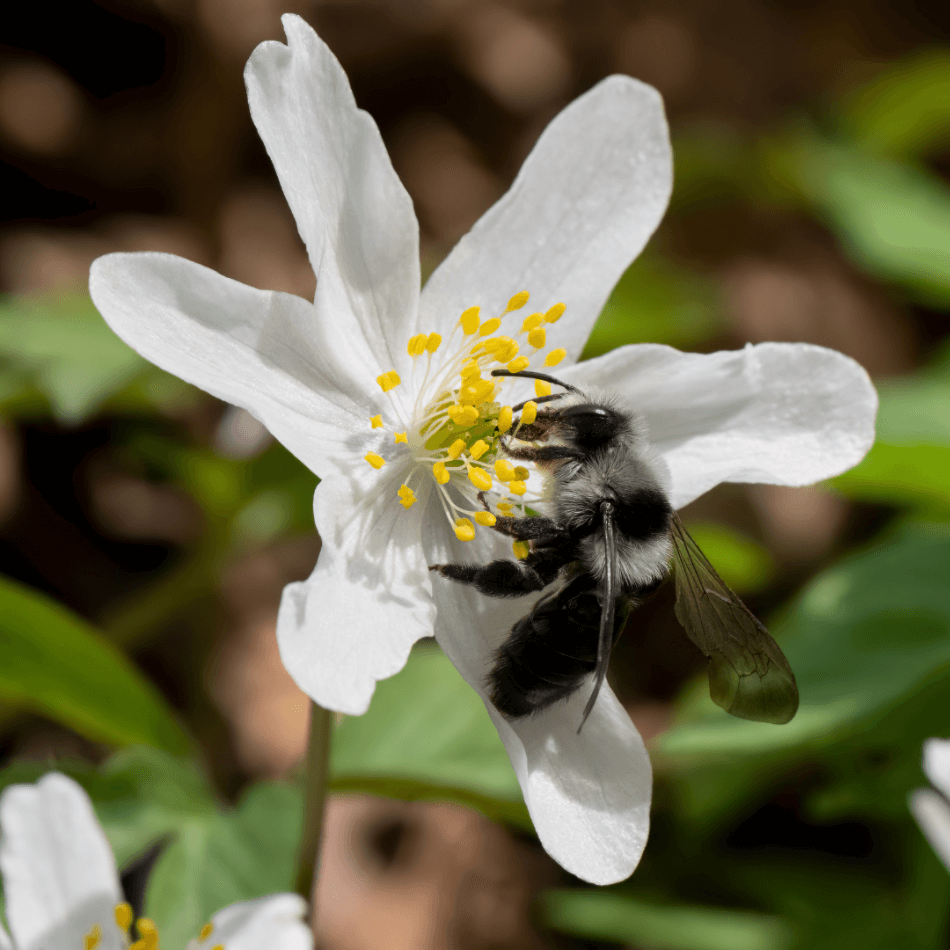Grey and black bees are some of the most commonly seen bee species in backyards and gardens. With their distinctive coloration, these bees stand out against brightly colored flowers as they go about their important work pollinating plants. While it can be tricky to identify the different types of grey and black bees at first glance, there are some key features to look for that set each species apart.
How to Tell Bees Apart from Wasps
Before diving into grey and black bee identification, it’s helpful to understand the difference between bees and wasps Bees and wasps belong to the insect order Hymenoptera and look quite similar, but have some distinct traits
- Bees are fuzzy, while wasps have smooth, slender bodies. Bees appear “plumper” due to their hairy bodies.
- Bees can only sting once, while wasps can sting multiple times.
- Wasps are generally more aggressive, especially near their nests. Bees tend to avoid confrontation.
- Wasps have narrow waists and prominent yellow/black banding on their abdomens. Bees have more subtle coloring, often just shades of black, grey, brown.
Common Grey and Black Bee Families
There are over 20,000 bee species globally across 7 families. The main families of bees containing grey and black species are:
- Apidae – Includes bumblebees, carpenter bees, honey bees
- Andrenidae – Mining bees
- Megachilidae – Mason bees, leafcutter bees
- Halictidae – Sweat bees, furrow bees
Many black and grey bees are ground-nesting solitary bees, while social bees like bumblebees and honeybees live in colonies.
Identifying Features of Grey and Black Bees
To identify grey and black bee species, look closely at:
Size
- Honey bees: 0.4-0.6 in
- Bumblebees: 0.5-1.0 in
- Carpenter bees: 0.5-1.0 in
- Mining bees: 0.2-0.5 in
- Mason bees: 0.5 in
- Leafcutter bees: 0.5-0.75 in
Coloring Patterns
- Distinct bands on abdomen (bumblebees)
- Solid black, grey, metallic coloring
- Pale hair bands on thorax or abdomen
- White/yellow facial markings
Body Shape
- Robust, very fuzzy (bumblebees)
- Slender, less hairy (mining bees)
- Stocky, broader abdomen (carpenter bees)
Nesting Habits
- Underground burrows (mining bees)
- Tunnels in wood (carpenter bees)
- Mud nests (mason bees)
- Hollow stems or holes (leafcutter bees)
Common Grey and Black Bee Species
Here are some of the most frequently encountered black and grey bees:
Bumblebee
Bumblebees have fuzzy black bodies with yellow orange, or white banding patterns. They nest in small colonies underground and are important native pollinators.
Honey Bee
Honey bees have amber/brown bodies with dark brown/black bands. They live in large hives and produce honey. They are not native to North America.
Carpenter Bee
Large, shiny black bees that tunnel into wood to make their nests. Males have yellow markings on their faces. They resemble bumblebees.
Mining Bee
A group of small black or grey bees that dig underground burrows. Females have thick scopa (pollen baskets) on their hind legs.
Mason Bee
Metallic blue-black bees that use mud to build nests in holes and crevices. They carry pollen on their bellies, not legs.
Leafcutter Bee
Black bees with white hair that cut circular pieces of leaves to seal their nests in holes. They have very large jaws.
Furrow Bee
Slender black bees with pale hair bands on their abdomen. They nest underground and are attracted to human sweat. Many are metallic green or blue.
Yellow-Faced Bee
Tiny black bees with yellow markings on faces and legs. They lack pollen baskets and store pollen in their stomachs.
Attracting Grey and Black Bees
Here are some tips to attract more black and grey bees to your garden:
- Plant native flowering plants they rely on like asters, sunflowers, clover, cosmos, crocus, poppies, primrose, and willow.
- Include late and early bloomers to provide food all season.
- Allow areas of dry, bare soil for ground nesting.
- Put out ‘bee hotels’ made from drilled wood blocks or bamboo stems for cavity nesters.
- Avoid pesticides which can harm bee populations.
- Provide a shallow water source like a bird bath, waterfall, or mister.
- Leave dead trees and fallen branches which provide nesting sites.
- Mulch beds with pine needles, leaves, stones to provide nesting material.
- Allow plants like lamb’s ear, lavender and mullein to go to flower for ‘wool’ to line nests.
Taking time to observe the different species of grey and black bees that visit your garden will help you identify them more easily. Look for subtle differences in size, hair patterns, and behaviors as they forage. With over 4,000 native bee species in North America, you’re sure to find some fascinating species in your own backyard.
Where Can You Find Ashy Mining Bees?
As well as the UK, these bees can be found throughout Europe, Scandinavia and Ireland. Ashy Mining Bees are visible between April and June.
Because their hairy bodies are used to living in cold places, you won’t find our ashy-colored friends in any tropical areas, the US, or Canada.
 Ashy Mining Bee
Ashy Mining Bee
 Ashy Mining Bee.
Ashy Mining Bee.
So, How Can You Recognise Them?
Ashy Mining Bees are the black cats of the bee world. They have shiny dark bodies and ash-grey hairs, unlike their brightly coloured bee friends. Their heads are surprisingly half grey and half black, and both genders have white/grey hairs on their faces.
Like many other types of bees, the female is bigger than the male. She is also curvier and has a hairless abdomen that makes her look glossier.
Learn Bee Types in English! Common Bee Names! Bee Species in English! Different Types of Bees!
FAQ
What are black and grey bees?
Is the ashy mining bee rare?
Do gray bees sting?
Do miner bees sting humans?
